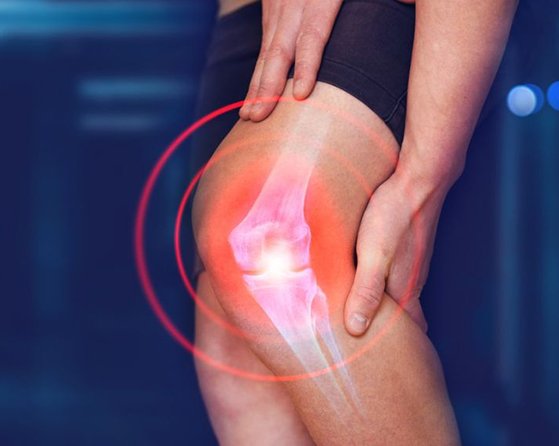Introduction
Knee osteoarthritis is a prevalent degenerative joint condition that can cause persistent pain and discomfort. The pain experienced by individuals with knee osteoarthritis is not solely derived from the cartilage wear and tear; rather, it involves multiple pain generators within and around the knee joint. In this blog, we will explore the various structures that contribute to pain in knee osteoarthritis, shedding light on the arthritic joint surface, joint capsule, synovium, pes anserine, osteophytes, tendon and ligament insertions, and superficial nerve sensitization.
Arthritic Joint Surface
The primary hallmark of knee osteoarthritis is the deterioration of the joint’s cartilage. As the cartilage thins and becomes rough, the once-smooth joint surface transforms into a source of discomfort. The loss of cartilage leads to bone-on-bone contact, causing inflammation, swelling, and pain
(1).
Joint Capsule
The joint capsule surrounds and encapsulates the knee joint, providing stability. In osteoarthritis, the joint capsule can become inflamed and thickened, contributing to stiffness and pain. Inflammation of the joint capsule amplifies the discomfort experienced by individuals with knee osteoarthritis
(2).
Synovium
The synovium is a thin layer of tissue that lines the inner surface of the joint capsule. In knee osteoarthritis, the synovium can become inflamed, producing excess synovial fluid. This fluid buildup adds pressure within the joint and triggers pain receptors, intensifying the pain sensation
(3).
Pes Anserine
Pes anserine is the confluence of three tendons located on the inner side of the knee. Inflammation of the pes anserine bursa, known as pes anserine bursitis, is common in knee osteoarthritis. This condition contributes to pain on the inner side of the knee, especially during activities that involve bending and extending the joint
(4).
Osteophytes
Osteophytes, commonly referred to as bone spurs, are bony projections that develop on the joint margins in response to cartilage loss. Osteophytes can irritate surrounding tissues, such as ligaments and tendons, leading to pain and restricted movement
(5).
Tendon and Ligament Insertion Pain
The attachment points of tendons and ligaments to bones can become painful in knee osteoarthritis. This pain arises due to stress on these structures caused by altered joint mechanics, inflammation, and degenerative changes. The
Quadriceps insertion and the insertion of the medial collateral can be typically painful.
Superficial Nerve Sensitization
As knee osteoarthritis progresses, the tissues around the joint can become more sensitive to pain. Superficial nerves in the skin and subcutaneous tissues can become hypersensitive, causing even gentle touch or pressure to elicit discomfort. This phenomenon further adds to the pain experienced by individuals with knee osteoarthritis
(6).
Understanding and Addressing Pain Generators
Understanding the various structures involved in generating pain in knee osteoarthritis is essential for comprehensive treatment. Targeted interventions that address inflammation, improve joint mechanics, and alleviate pressure on pain-sensitive structures can help manage pain effectively.
Conclusion
Knee osteoarthritis pain is not solely attributed to cartilage wear. Instead, it arises from a complex interplay of various structures within and around the knee joint. By understanding the pain generators like the arthritic joint surface, joint capsule, synovium, pes anserine, osteophytes, tendon and ligament insertions, and superficial nerve sensitization, healthcare professionals can tailor treatment approaches to provide relief and improve the quality of life for individuals with
knee osteoarthritis.
References
- Zhang Y, Jordan JM. Epidemiology of osteoarthritis. Clin Geriatr Med. 2010;26(3):355-369.
- Malemud CJ. Biologic basis of osteoarthritis: state of the evidence. Curr Opin Rheumatol. 2015;27(3):289-294.
- Scanzello CR, Goldring SR. The role of synovitis in osteoarthritis pathogenesis. Bone. 2012;51(2):249-257.
- Cleveland Clinic. Pes Anserine Bursitis. https://my.clevelandclinic.org/health/diseases/17798-pes-anserine-bursitis
- Zhang Y, et al. Tibiofemoral joint osteoarthritis: risk factors for MR-depicted fast cartilage loss over a 30-month period in the multicenter osteoarthritis study. Radiology. 2009;252(3):772-780.
- Wylde V, et al. Chronic pain after total knee arthroplasty. EFORT Open Rev. 2018;3(8):461-470.



